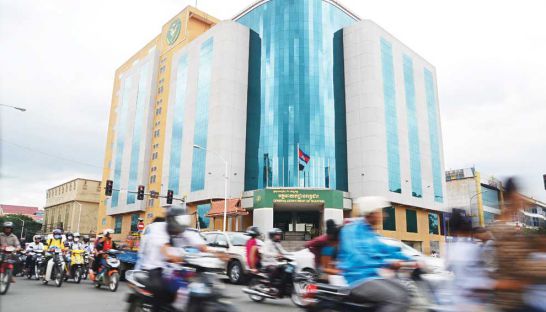Sleeker tax system nets more revenue
Sleeker tax system nets more revenue
Efforts to introduce an effective, modern taxation system appear to be paying off as government coffers swelled last year, giving the state more revenue to use for development at a time when donor aid is drying up.

Tax collection revenue grew by 15 percent to $1.49 billion last year, according to newly released data from the General Authority for Taxation (GDT).
The record-setting year was a testament to prudent and effective reforms aimed at enhancing Cambodia’s tax laws and improving taxpayer compliance, say financial experts.
Anthony Galliano, CEO of Cambodian Investment Management, said that progressive changes to Cambodia’s tax system have given the government greater control over the national economy and reduced its reliance on foreign aid.
“Whereas development planning largely relied on the expectations of benefactors, the country now is privileged to have a recurrent annuity stream to fill the national treasury, thanks largely to the GDT,” he said yesterday.
“There is now a dependable, increasing, and significant tax collection revenue stream for the government.”
The higher tax revenue recorded in 2016 was the product of a series of reforms in recent years aimed at improving the efficiency of the tax regime and encouraging taxpayer compliance.
Topping these reforms was the GDT’s decision to abolish the so-called estimated tax regime (ETR), which covered mostly small enterprises, and bring all businesses into the fold of its more stringent “real” tax regime.
“By the GDT’s own admission, the estimated regime was totally inefficient and shielded underpayment of tax, and most importantly, created an uncompetitive market in Cambodia,” he explained, adding that the decision to scrap the ETR last year was “the most monumental and decisive change in the tax regime in decades”.
The growth in tax revenue comes as more efficient customs procedures and enforcement yields higher customs and excise revenue. Last week, the General Department of Customs and Excise (GDCE) revealed that Cambodia collected $1.74 billion in customs and excise revenue in 2016, a 10 percent increase over the previous year.
Combined revenue from GDT and GDCE topped $3.23 billion last year, representing 74 percent of the $4.3 billion 2016 national budget.
Kung Phoak, co-founder and president of the Cambodian Institute for Strategic Studies (CISS), said the higher taxation and customs revenue would give the government more latitude to develop infrastructure, as well as various social and economic programs.
“It is still a priority for the government to continue working on significant reforms to ensure transparency in taxation and custom revenue collection,” he said.
“We need a continually larger budget to develop society and the economy.” While Galliano applauded the GDT for its accomplishments over the last two years he said there was still room for further improvements, particularly in enforcement.
“There is still too much focus on registered and established taxpayers rather than looking at those evading tax,” he said. “The GDT has access to an unyielding source of information for unregistered businesses, yet increasing tax revenues seem more targeted to registered taxpayers, as evidenced by the three-fold increase in audits, rather than those who continue to dodge the system.”
Son Chhay, chief whip of the opposition Cambodia National Rescue Party, told The Post last week that the government still has a long way to go in eliminating the corruption and inefficiencies that deprive Cambodia of its national revenue.
“If we collect revenue from both customs and taxation according to the law we will generate at least another $1 billion a year for the nation,” he said.
“That’s about equal to the amount we borrow from abroad each year.”













